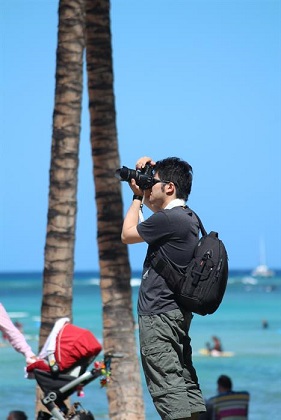
Become a guru at capturing eye-catching landscape images!
You will learn to deal with a range of problems found in natural areas, including uneven light, shade, glare and capturing what you see as opposed to just what the camera sees.
You will develop compositional skills and create a folio of landscape photographs.
The course also covers ways to use your work and job possibilities.
 COURSE STRUCTURE
COURSE STRUCTURE
There are 8 lessons as follows:
- Introduction
- The Main Principles
- Creating Different Effects
- Photographing Natural Areas
- Photographing Streetscapes
- Photographing Water
- Developing Your Own Photographic Style
- Major Project
Each lesson culminates in an assignment which is submitted to the school, marked by the school's tutors and returned to you with any relevant suggestions, comments, and if necessary, extra reading.
 SUMMARY OF AIMS
SUMMARY OF AIMS
- To know and understand the equipment and materials used in photography.
- Create different affects photographing the same landscape.
- Compose a well-balanced photo.
- Utilise form to create a three dimensional affect.
- Develop your own photographic style.
WHAT THE COURSE COVERS
 Here are just some of the things you may be doing:
Here are just some of the things you may be doing:
- Revision of the basics of photography.
- Building a resource file.
- Applying principles of landscape photography to evaluate published photos.
- Choosing equipment and materials appropriate to specified needs.
- Using filters to create different effects.
- Dealing with a range of problems found in natural areas, including uneven light, shade, glare, etc.
- Photographing buildings and streetscapes.
- The characteristics of water and its affect on photography.
- Selecting and composing a photograph to create the predetermined affect.
- Create a folio of landscape photographs.
APPROACHES TO LANDSCAPE PHOTOGRAPHY
Generally there are three main ways to approach landscape photography:
1. Realistic
This is where the photographer attempts to create an obvious and recognisable image of a landscape. The photographer captures the most realistic and accurate representation of the landscape.

2. Impressionistic
Some realism is compromised in order to create a different mood or impression. Impressionistic landscape photography sets out to create an emotional reaction, or emphasise a particular aspect. Instead of conveying the actual landscape, the photographer creates their 'impression' of the landscape. For example, if the photographer notices a field with a section of beautiful flowers, the photographer may imagine or see the entire field as being a field of flowers. The photographer would then photograph the flowers in such a way that gives the impression that the whole field is filled with flowers. This is about creating a particular impression/the photographers view of the landscape. Photographic techniques are used to position a landscape in a particular way.
3. Abstract
Landscape features are used to create images of shape, colour, texture and/or tone, which are not necessarily clearly recognised as being natural. These effects are controlled mostly by varying:
- The selection of subject photographed
- The way the photo is composed
- The viewing angle (eg. looking down, up or straight ahead).
- Lighting
- Choice of lens
Abstract photography intends to create a piece of art that is loosely based on a real landscape. Design is more important than clear landscape representation. Shape and form are a priority. Under or overexposure and extreme exaggerated contrasts are techniques often employed to create an abstract photo.